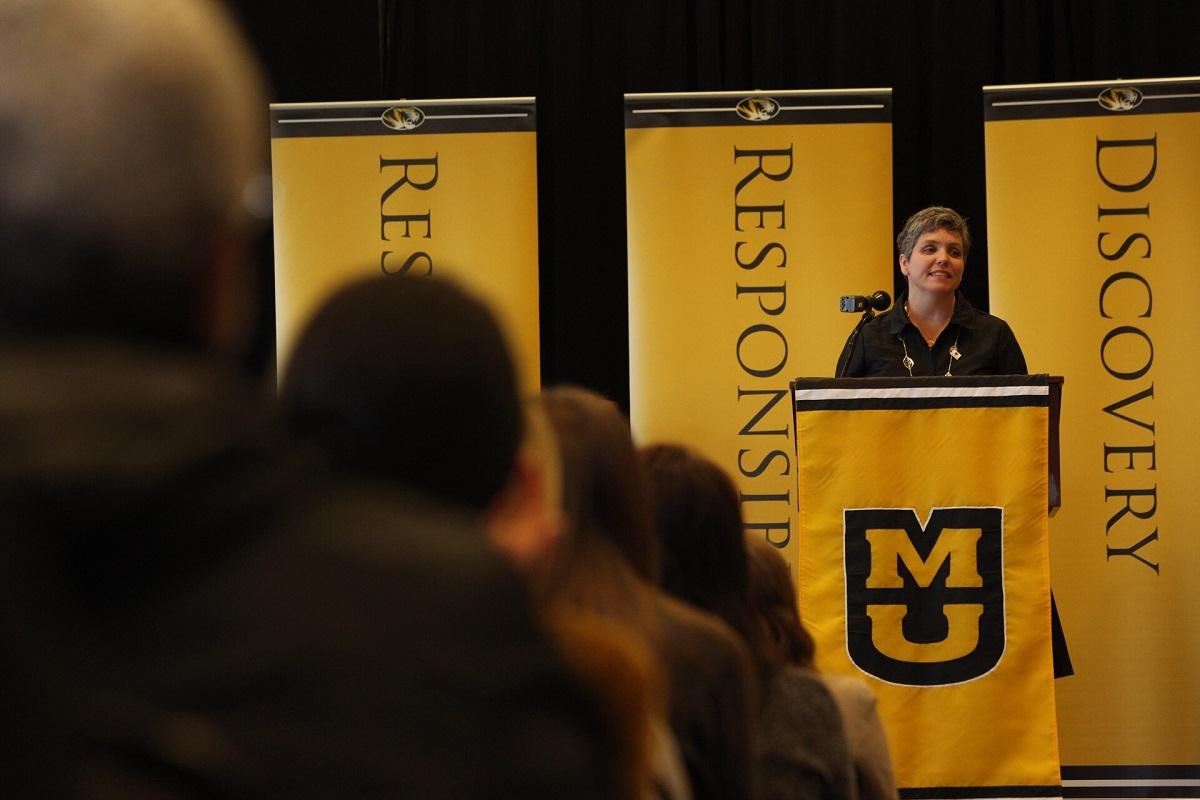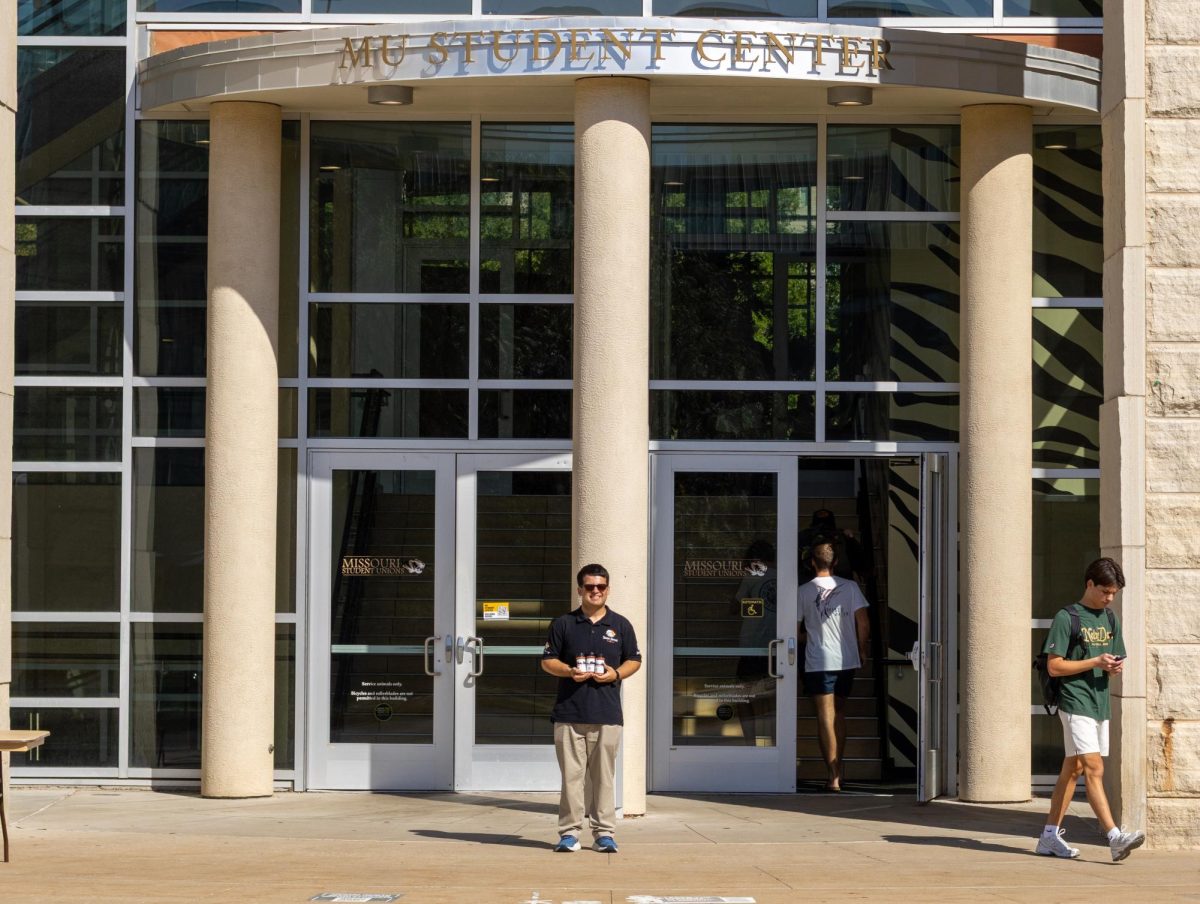Enhancing Missouri’s Instructional Networked Teaching Strategies, an outreach program in the College of Education, was recently awarded $22.4 million from two federal grants and private sector matching funds.
The $22.4 million total can be broken down into two basic components: the U.S. Department of Education awarded eMINTS the $14.6 million Supporting Effective Educator Development grant and the $4 million Education Innovation and Research Award. Kansas City Audio-Visual matched the former with $3.42 million and the latter with $400,000.
The SEED grant is the largest that the college has received to date. According to Kathryn Chval, dean of the College of Education, this fact may bring opportunities to other areas of the college.
“In the College [of Education], we’re looking for partners that want to invest in a national STEM education center, so grants like this could bring people to the table that wouldn’t have necessarily engaged in conversations with us about establishing a center like that if they didn’t know this was happening,” Chval said.
The SEED grant will focus on strengthening STEM education in rural middle schools in Missouri and Kansas. The Education Innovation and Research Award will encourage prosocial learning in elementary schools in seven southern Missouri rural districts.
Deciding what groups to help and recruiting schools within that group is part of a rigorous grant writing process, eMINTS Director Christine Terry said.
“Every time we do a project, we always determine criteria for what we’re looking for in our participants,” Terry said. “The U.S. Department of Education often has a requirement that you work with ‘high-needs schools.’ There’s a lot of interpretation as to what is a high-needs school, so you just need to make a case within your proposal that the schools that you want to work with are high-needs schools.”
Another element in the process of obtaining a grant is securing matching funds from private sector companies such as Kansas City Audio-Visual, an AV supply company.
“In our very first 2010 Grant, KCAV was one of our partners among many others,” Terry said. “Over time, they have just been so supportive of us. They partner with us to ensure that we are able to stretch our technology budget to serve as many schools as possible, making every penny count.
eMINTS has been operating since 1999 to aid schools with professional development centered around four main components: authentic learning, high quality lesson design, creating a community of learners and being powered by technology.
“Our mission is to create classrooms where students are innovators, collaborators and problem-solvers, so we do that through a combination of research proven teaching practices and technology,” Terry said.
While eMINTS’ work with the new grants will utilize devices such as Chromebooks and 3D Printers, Johannes Strobel, professor in the College of Education in the School of Information Science and Learning Technologies, said the “technology” the program utilizes is more about processes.
“You can talk about an iPhone as technology,” Strobel said. “You can also talk about using an engineering design process like empathy, ideation, finding out possible solutions, making a prototype, testing it and revisiting your initial problem that you tried to solve.”
This professional development involves a train-the-trainer model. District trainers learn to implement and adapt the program for local needs and, in-turn, provide 140 hours of professional development for teachers over two years plus in-classroom coaching. An additional component for administrators includes professional development around digital age leadership and how to best support the program, Terry said.
Working with the SEED grant, Strobel plans to use his experience in STEM education in developing materials to train teachers to create high quality STEM-based lesson plans on their own. Strobel will also review these lesson plans as teachers create them.
Additionally, Strobel will work to generate objects that will be used in classroom activities to encourage physical learning.
“A lot of times when you teach STEM, we want to push learning about science to learning by doing science,” Strobel said. “So, the doing science part often requires some form of manipulatives, so any form of physical objects that help you learn. It might be a catapult, it might be a simple machine or something like that that teaches science concepts.”
This “learning by doing” concept will also be incorporated in activities to solve real-world problems in the students’ communities.
“It could be anywhere from redesigning school lunches to doing water sampling to finding out if pollution in fertilizer water run-off is affecting the local waters,” Terry said. “There’s just a lot of opportunities.”
Strobel said engaging students in STEM education with these kinds of activities is important based on how widely applicable STEM skills are.
“Now we realize that STEM is an area that goes into nearly every job,” Strobel said. “I know many students who come to campus and they pursue majors that interest them, and then they realize part of their major that they’re pursuing requires STEM skills.”
With the Education Innovation and Research Award, eMINTS will partner with Christi Bergin, associate dean for research and innovation in the College of Education and research professor.
“I’m going to be collaborating with the eMINTS program as they are helping teachers develop lessons that are problem-based, hands-on, with students working in teams in a technology rich environment,” Bergin said. “My part will be to help teachers learn research-based strategies for how to promote cooperative, kind, supportive behavior among the students towards each other.”
Bergin will use her expertise in prosocial learning to help train teachers in using prosocial techniques derived from her book, “Designing a Prosocial Classroom.” These techniques include using positive discipline, giving students an opportunity to practice and model prosocial behavior, creating an emotionally upbeat classroom tone and establishing more positive teacher-student relationships.
“There is a great philosopher that said that morality comes from the memory of having been cared for,” Bergin said. “When teachers care for students, students care for each other. Really, the foundation of the emotional climate of any classroom is that teacher-student relationship.”
One prosocial learning approach is to bring in lessons about behavior as part of a class’s daily curriculum. However, the eMINTS work will focus on how teachers can encourage prosocial behavior through their own conduct.
“Our approach is not a curriculum add-on, but rather is infused in the simple daily interactions that teachers have with kids,” Bergin said. “It’s not so much what you ‘do’ but how you ‘are’ in the way that you interact with kids.”
This early behavioral learning can have a large impact on one’s adult life.
“When people look at adult behavior in the workplace and what is it that causes people to leave, the number one reason is an unpleasant work environment,” Bergin said. “Helping people learn to live together in harmony is a really important task. Increasingly, employers are saying that one of the most important things that they want in employees are social skills.”
Due to its past successes and dedicated staff, Chval said that eMINTS is well equipped to collaborate with these schools to design learning experiences tailored to the unique characteristics of rural school communities.
“Here you have this team that has a long track record of being successful,” Chval said. “These are professional staff at our college that work very hard. They’re very committed to children and families and communities. We are very grateful to everyone who contributed to secure these awards.”
_Edited by Morgan Smith | [email protected]_








